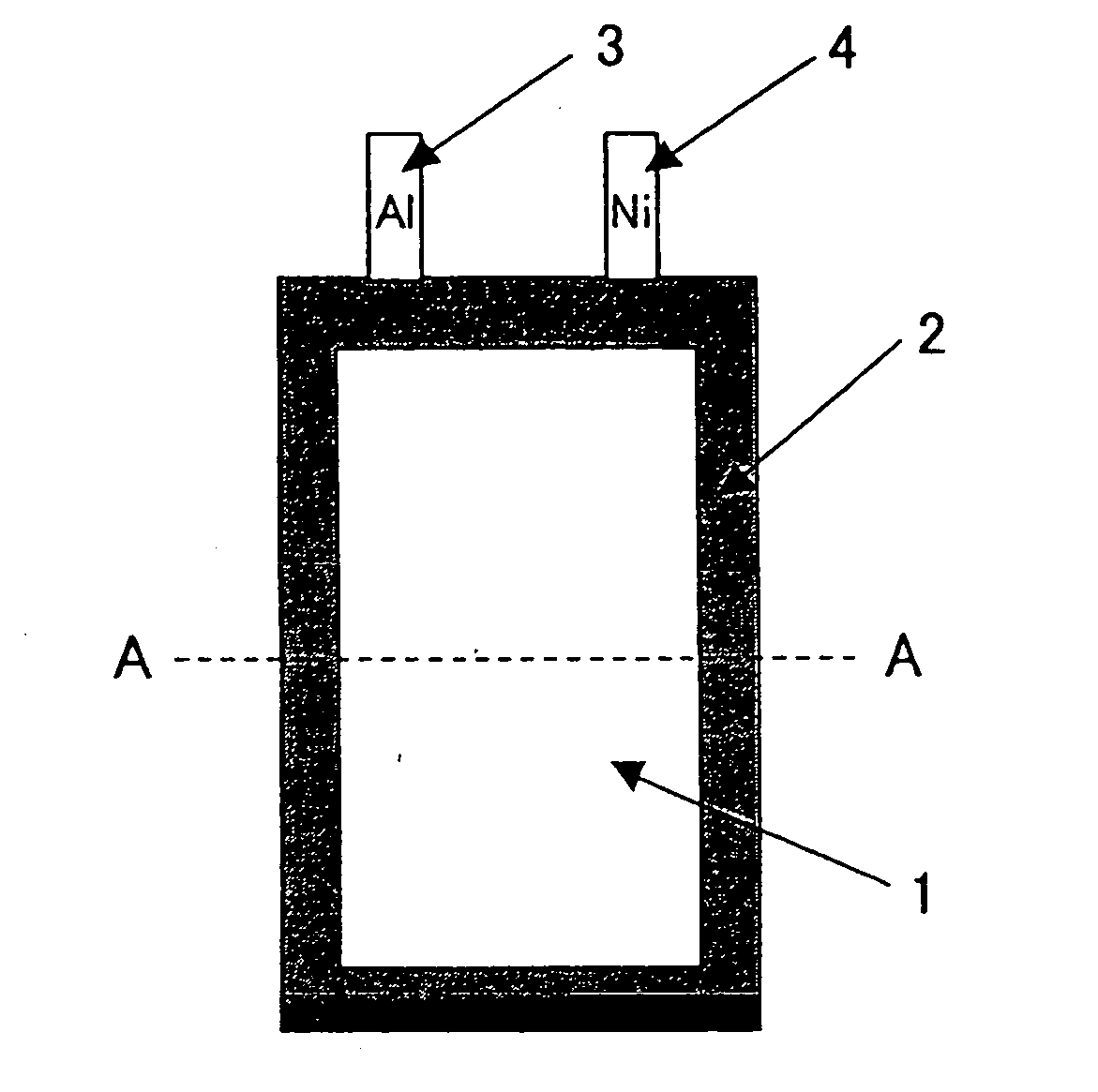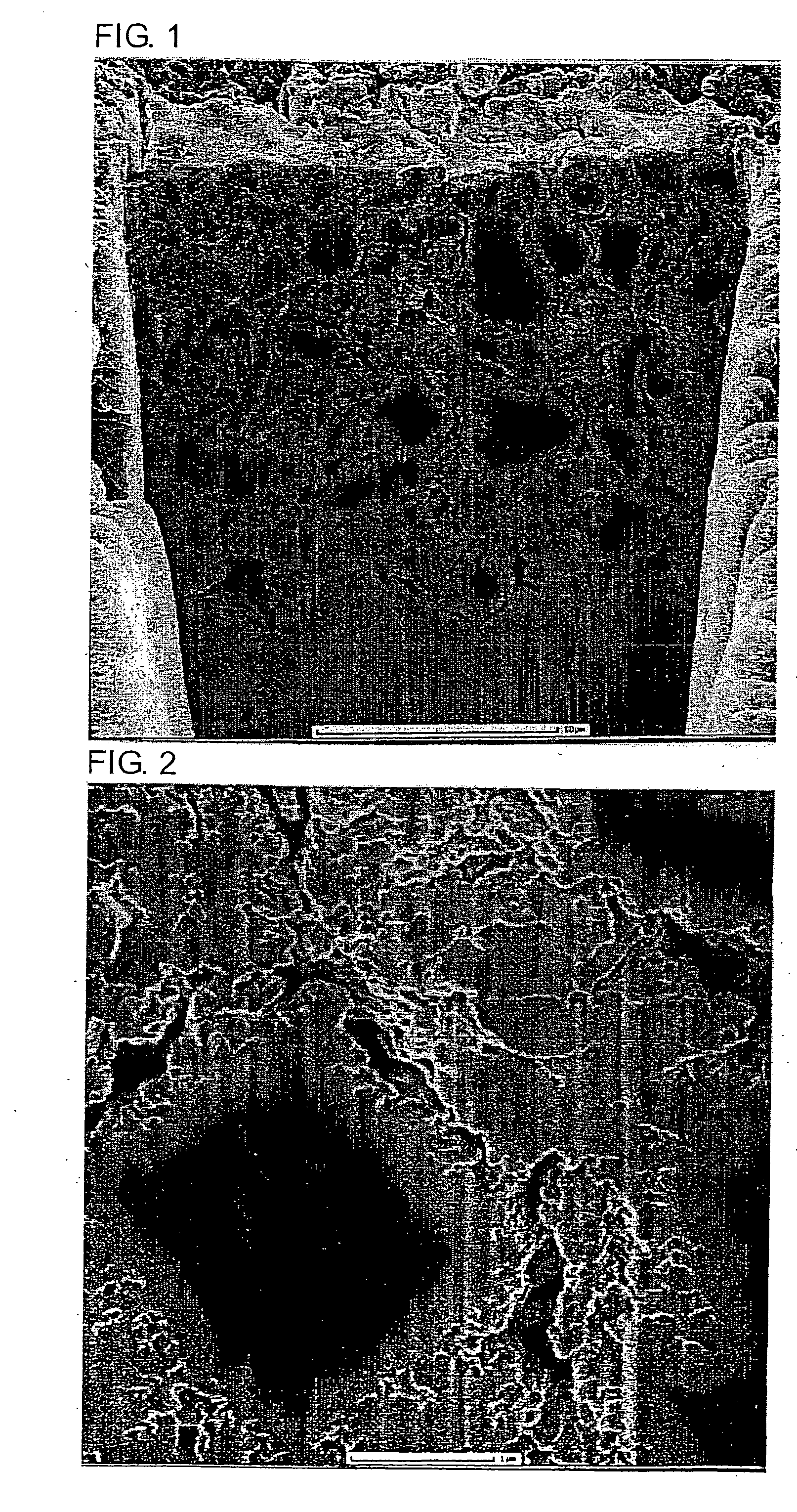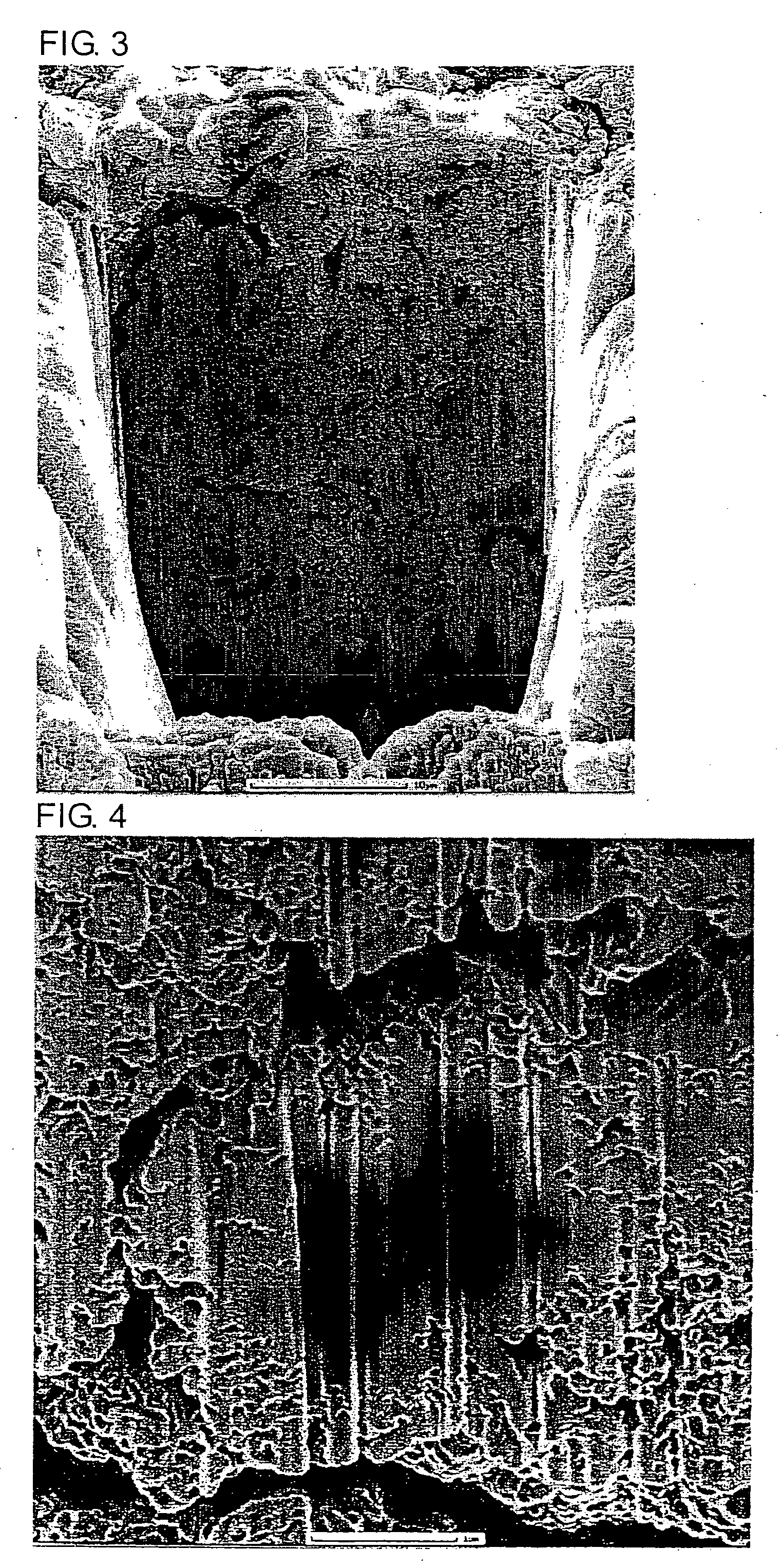Lithium secondary battery and method for producing same
a lithium battery and secondary battery technology, applied in the direction of non-aqueous electrolyte cells, cell components, sustainable manufacturing/processing, etc., can solve the problems of reducing the current-collecting capacity of the electrode, increasing the thickness of the negative electrode, and deteriorating the charge-discharge cycle performance characteristics, etc., to achieve superior cycle characteristics and high charge-discharge capacity
- Summary
- Abstract
- Description
- Claims
- Application Information
AI Technical Summary
Benefits of technology
Problems solved by technology
Method used
Image
Examples
experiment 1
[0092] (Preparation of Negative Electrode)
[0093] 81.8 parts by weight of silicon powder (99.9% pure) having a mean particle diameter of 3 μm as the active material particles was mixed in 8.6 wt. % N-methylpyrrolidone solution containing 18.2 parts by weight of polyimide as a binder to provide an anode mix slurry.
[0094] This anode mix slurry was coated on one surface (rough surface) of an electrolytic copper foil (35 μm thick) (current collector a1) having an arithmetic mean surface roughness Ra of 0.5 μm and then dried. A 25 mm×30 mm rectangular piece was cut out from the coated copper foil, rolled and then sintered by a heat treatment under argon atmosphere at 400° C. for 30 hours to provide a negative electrode. The sintered body (inclusive of the current collector) was 50 μm thick. Accordingly, the thickness of the anode mix layer was 15 μm, anode mix layer thickness / copper foil arithmetic mean surface roughness was 30, and anode mix layer thickness / copper foil thickness was 0....
experiment 2
[0106] Carbon dioxide was not blown into the electrolyte solution x in Experiment 1. Instead, 5 weight % of vinylene carbonate was added thereto to prepare an electrolyte solution b1. The procedure of Experiment 1 was followed, except that the above-prepared electrolyte solution b1 was used and battery fabrication was performed under argon atmosphere, to fabricate a battery B1.
[0107] (Evaluation of Charge-Discharge Cycle Characteristics)
[0108] The above-fabricated batteries A1 and B1 were evaluated for charge-discharge cycle performance characteristics. Each battery was charged at 25° C. at a constant current of 14 mA to 4.2 V, charged at a constant voltage of 4.2 V to a current of 0.7 mA and then discharged at a current of 14 mA to 2.75 V. This was recorded as a unit cycle of charge and discharge. The battery was cycled to determine the number of cycles after which its discharge capacity fell down to 80% of its first-cycle discharge capacity and the determined cycle number was re...
experiment 3
[0118] In this Experiment, the effect of the mean particle diameter of the silicon powder on the cycle characteristics was studied.
[0119] The procedure of Experiment 1 was followed, except that a silicon powder having a mean particle diameter of 20 μm was used, to fabricate a battery A2. Also, the procedure of Experiment 2 was followed, except that a silicon powder having a mean particle diameter of 20 μm was used, to fabricate a battery B2.
[0120] In accordance with the procedure in Experiment 2, these batteries were evaluated for cycle performance characteristics. The cycle life of each battery is indicated by an index when that of the battery A1 is taken as 100. In Table 3, the cycle lives of the batteries A1 and B1 are also shown.
TABLE 3Amount of CarbonMean ParticleDioxide Dissolved inDiameter of SiliconElectrolyte SolutionPowderBattery(wt. %)(μm)Cycle LifeA10.373100A20.372064B10348B202022
[0121] As can be clearly seen from Table 3, the battery A1 using a silicon powder having...
PUM
| Property | Measurement | Unit |
|---|---|---|
| Percent by mass | aaaaa | aaaaa |
| Percent by mass | aaaaa | aaaaa |
| Percent by mass | aaaaa | aaaaa |
Abstract
Description
Claims
Application Information
 Login to View More
Login to View More - R&D
- Intellectual Property
- Life Sciences
- Materials
- Tech Scout
- Unparalleled Data Quality
- Higher Quality Content
- 60% Fewer Hallucinations
Browse by: Latest US Patents, China's latest patents, Technical Efficacy Thesaurus, Application Domain, Technology Topic, Popular Technical Reports.
© 2025 PatSnap. All rights reserved.Legal|Privacy policy|Modern Slavery Act Transparency Statement|Sitemap|About US| Contact US: help@patsnap.com



